
|
|
Font Size:
|
||||
|
|
|
|
||||
STATISTICAL BRIEF #179:
Aspirin Use among the Adult U.S. Noninstitutionalized Population, with and without Indicators of Heart Disease, 2005
Highlights
- In 2005, about one-fifth of U.S. adults (age 18 and older) reported taking aspirin either every day or every other day.
- Aspirin use increased with age. Almost half of those age 65 and over reported taking aspirin daily or every other day.
- Non-Hispanic whites were most likely to report taking aspirin every day or every other day as compared with Hispanic, non-Hispanic Asian, or non-Hispanic black adults.
- More than half of those who were told by a doctor that they have indicators of heart disease reported taking aspirin every day or every other day.
Introduction
Aspirin is one of the most common drugs in use today. The U.S. Preventive Services Task Force (USPSTF) has found good evidence that aspirin decreases the incidence of coronary heart disease in adults who are at increased risk for heart disease and strongly recommends that clinicians discuss aspirin chemoprevention with these at-risk adults. According to USPSTF, discussions with patients should address both the potential benefits and risks of aspirin therapy.
This Statistical Brief provides estimates of aspirin use among the U.S. population age 18 and older. The brief further looks at the use of aspirin among those with or without indicators of heart disease. The estimates presented are derived from data collected in the questionnaire used in the Household Component of the Medical Expenditure Panel Survey (MEPS-HC). All differences discussed in the text are statistically significant at the 0.05 level or better.
Findings
Aspirin is a medicine that relieves pain and reduces fever. When used daily, aspirin has been shown to be helpful in lowering the risk of heart attack, clot-related strokes, and other blood flow problems.
In 2005, almost one-fifth (19.3 percent) of U.S. adults (about 43 million) reported taking aspirin every day or every other day (figure 1). More than half (53.9 percent) of those who were ever told by a doctor that they have indicators of heart disease reported taking aspirin every day or every other day as compared with those who were never told by a doctor that they had indicators of heart disease (14.8 percent).
Age
Aspirin use increased up with age. Almost half (48.5 percent) of those age 65 and over reported taking aspirin every day or every other day as compared with about one-fourth (27.0 percent) of those age 45 to 64 (figure 1). Among those who were 65 and older and were told that they had indicators of heart disease, nearly two-thirds (63.7 percent) reported taking aspirin every day or every other day compared with 41.4 percent of those in the same age group who were never told that they had indicators of heart disease.
Sex
A higher percentage of males who were told that they had indicators of heart disease reported taking aspirin every day or every other day as compared with females who were told that they had indicators of heart disease (61.3 percent versus 47.4 percent, respectively) (figure 2).
Race/ethnicity
White non-Hispanic adults were more likely to take aspirin every day or every other day (22.3 percent) as compared with black non-Hispanic (15.1 percent), Asian non-Hispanic (11.5 percent), and Hispanic (10.1 percent) adults (figure 3). More than half of Asian non-Hispanic adults (54.0 percent) who were told by a doctor that they had indicators of heart disease reported taking aspirin every day or every other day as compared with the less than 10 percent (9.1 percent) of Asian non-Hispanic adults who were never told that they had indicators of heart disease.
Metropolitan areas
A higher percentage of persons who lived in non-metropolitan areas reported taking aspirin every day or every other day as compared with those who lived in metropolitan areas (23.1 percent versus 18.6 percent, respectively) (figure 4).
Insurance status
More than half of those who were 65 and over and covered by Medicare and private insurance reported taking aspirin on a regular basis compared with those who had Medicare only or Medicare plus some public insurance (52.0 percent versus 44.7 percent and 41.3 percent, respectively) (figure 5 ). Among those adults age 18 to 64 and uninsured, a lower percentage reported taking aspirin every day or every other day as compared with those who had private or public only insurance (10.3 percent versus 14.2 percent and 14.6 percent, respectively).
Data Source
The estimates in this Statistical Brief were derived from the MEPS 2005 Full Year Population Characteristics data file (HC-090).
Definitions
Questions related to taking aspirin every day or every other day were asked in the priority conditions section of the MEPS-HC questionnaire.
Heart disease indicators
The indicators for heart disease were drawn from variables indicating presence of heart disease (coronary heart disease, angina, heart attack, stroke, or any other heart related disease). For each of the conditions listed, the following question was asked: "(Have/Has) PERSON ever been told by a doctor or other health professional that PERSON had [condition]. "
Racial and ethnic classifications
Classification by race and ethnicity was based on information reported for each family member. Respondents were asked if each family member was Hispanic or Latino. Respondents were also asked which race or races best describes each family member. Race categories include white, black/African American, American Indian or Alaska Native, Asian, Native Hawaiian or other Pacific Islander, and other. Based on these questions, sample persons were classified into the following race/ethnicity categories: Hispanic, white non-Hispanic single race, black non-Hispanic single race, Asian non-Hispanic single race, and other (Hawaiian/Pacific Islander, non-Hispanic; American Indian/Alaska Native, non-Hispanic; and multiple races, non-Hispanic).
Health insurance status
Individuals under age 65 were classified in the following three insurance categories based on household responses to health insurance status questions:
- Any private health insurance: Individuals who, at any time during the year, had insurance that provides coverage for hospital and physician care (other than Medicare, Medicaid, or other public hospital/physician coverage) were classified as having private insurance. Coverage by TRICARE (Armed Forces-related coverage) was also included as private health insurance. Insurance that provides coverage for a single service only, such as dental or vision coverage, was not included.
- Public coverage only: Individuals were considered to have public coverage only if they met both of the following criteria: 1) they were not covered by private insurance at any time during the year, and 2) they were covered by one of the following public programs at any point during the year: Medicare, Medicaid, or other public hospital/physician coverage.
- Uninsured: The uninsured were defined as people not covered by private hospital/physician insurance, Medicare, TRICARE, Medicaid, or other public hospital/physician programs at any time during the entire year or period of eligibility for the survey.
- Medicare only: Individuals who, at any time during the year, were covered by Medicare only.
- Medicare plus private: Individuals who at any time during the year, were covered by a combination of Medicare, TRICARE or private insurance.
- Medicare plus other public coverage: Individuals who, at any time during the year, were covered by Medicare in addition to some other type of public insurance, and no other private coverage.
Metropolitan areas are metropolitan statistical areas (MSAs) designated by the U.S. Office of Management and Budget that are composed of a large population nucleus combined with adjacent communities that have a high degree of economic and social integration with the nucleus. An MSA has one or more central counties containing the areas main population concentration.
About MEPS-HC
MEPS-HC is a nationally representative longitudinal survey that collects detailed information on health care utilization and expenditures, health insurance, and health status, as well as a wide variety of social, demographic, and economic characteristics for the civilian noninstitutionalized population. It is cosponsored by the Agency for Healthcare Research and Quality and the National Center for Health Statistics.
For more information about MEPS, call the MEPS information coordinator at AHRQ (301-427-1656) or visit the MEPS Web site at http://www.meps.ahrq.gov/.
References
For a detailed description of the MEPS survey design, sample design, and methods used to minimize sources of nonsampling error, see the following publications:
Cohen, J. Design and Methods of the Medical Expenditure Panel Survey Household Component. MEPS Methodology Report No. 1. AHCPR Pub. No. 97-0026. Rockville, Md.: Agency for Health Care Policy and Research, 1997.
Cohen, S. Sample Design of the 1996 Medical Expenditure Panel Survey Household Component. MEPS Methodology Report No. 2. AHCPR Pub. No. 97-0027. Rockville, Md.: Agency for Health Care Policy and Research, 1997.
Cohen, S. Design Strategies and Innovations in the Medical Expenditure Panel Survey. Medical Care, July 2003: 41(7) Supplement: III-5-III-12.
For information on aspirin use, see the following:
Aspirin: Questions and Answers - http://www.fda.gov/cder/news/aspirin/aspirin_QA.htm
Aspirin for Reducing Your Risk of Heart Attack and Stroke: KNOW THE FACTS, Center for Drug Evaluation and Research - http://www.fda.gov/cder/consumerinfo/dailyaspirin_ brochure.htm
U.S. Preventive Services Task Force, Aspirin for Primary Prevention of Cardiovascular Events--Chemoprevention - http://www.ahrq.gov/clinic/uspstf/uspsasmi.htm
Can daily aspirin therapy save your life? University of Michigan Health Minute update on important health issues - http://www.med.umich.edu/opm/newspage/2003/aspirin.htm
Suggested Citation
Soni, A. Aspirin Use among the Adult U.S. Noninstitutionalized Population, with and without Indicators of Heart Disease, 2005. Statistical Brief #179. July 2007. Agency for Healthcare Research and Quality, Rockville, Md. http://www.meps.ahrq.gov/mepsweb/data_files/publications/st179/stat179.shtml
AHRQ welcomes questions and comments from readers of this publication who are interested in obtaining more information about access, cost, use, financing, and quality of health care in the United States. We also invite you to tell us how you are using this Statistical Brief and other MEPS data and tools and to share suggestions on how MEPS products might be enhanced to further meet your needs. Please e-mail us at mepspd@ahrq.gov or send a letter to the address below:
Steven B. Cohen, PhD,
Director Center for Financing, Access, and Cost Trends
Agency for Healthcare Research and Quality
540 Gaither Road
Rockville, MD 20850
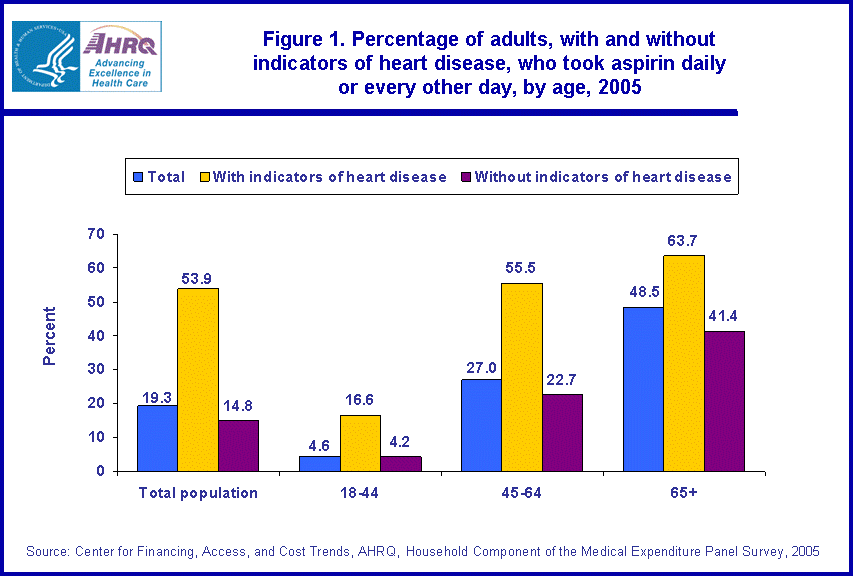 |
||||||||||||||||||||||||||||||||||||||||||||||||
|
||||||||||||||||||||||||||||||||||||||||||||||||
|
|
||||||||||||||||||||||||||||||||||||||||||||||||
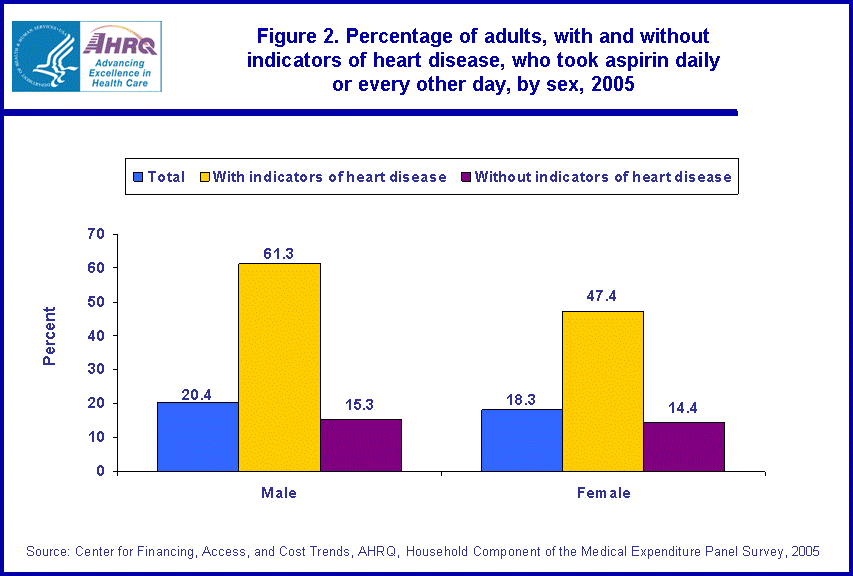 |
||||||||||||||||||||||||||||||||||||||||||||||||
|
||||||||||||||||||||||||||||||||||||||||||||||||
|
|
||||||||||||||||||||||||||||||||||||||||||||||||
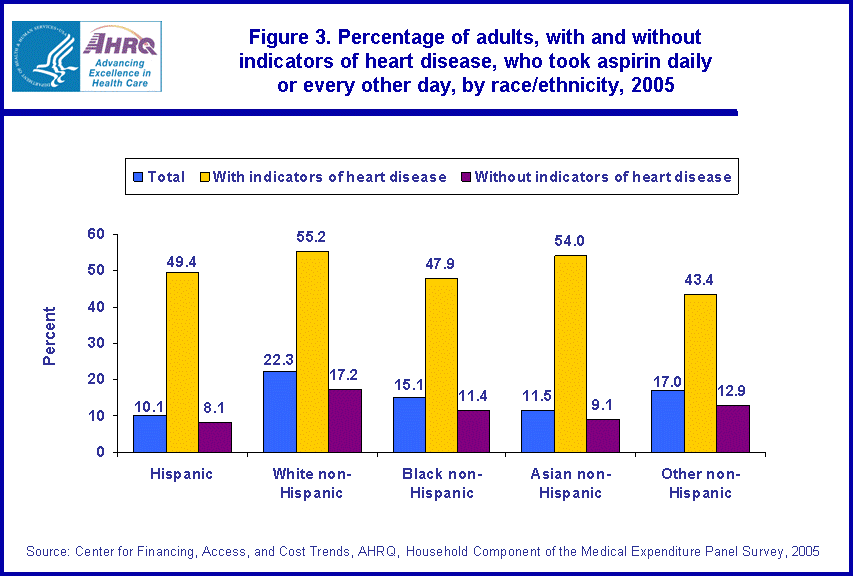 |
||||||||||||||||||||||||||||||||||||||||||||||||
|
||||||||||||||||||||||||||||||||||||||||||||||||
|
|
||||||||||||||||||||||||||||||||||||||||||||||||
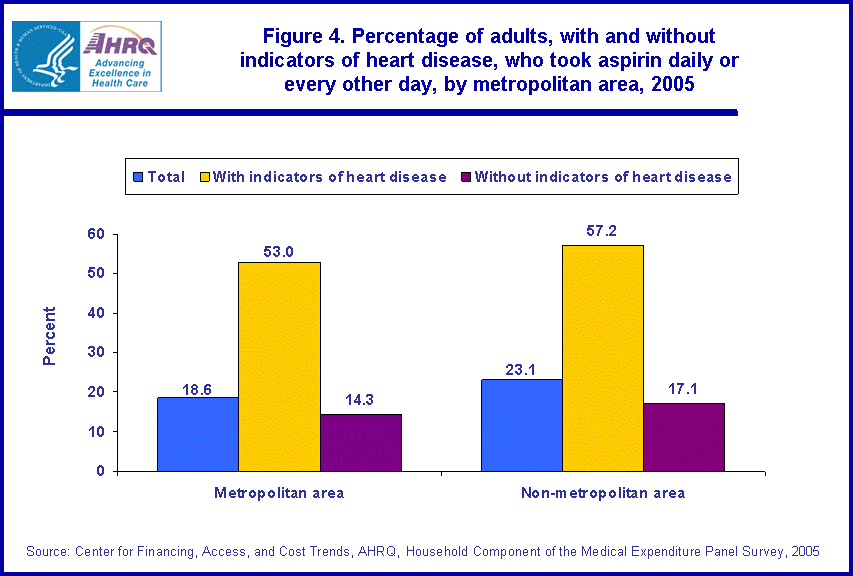 |
||||||||||||||||||||||||||||||||||||||||||||||||
|
||||||||||||||||||||||||||||||||||||||||||||||||
|
|
||||||||||||||||||||||||||||||||||||||||||||||||
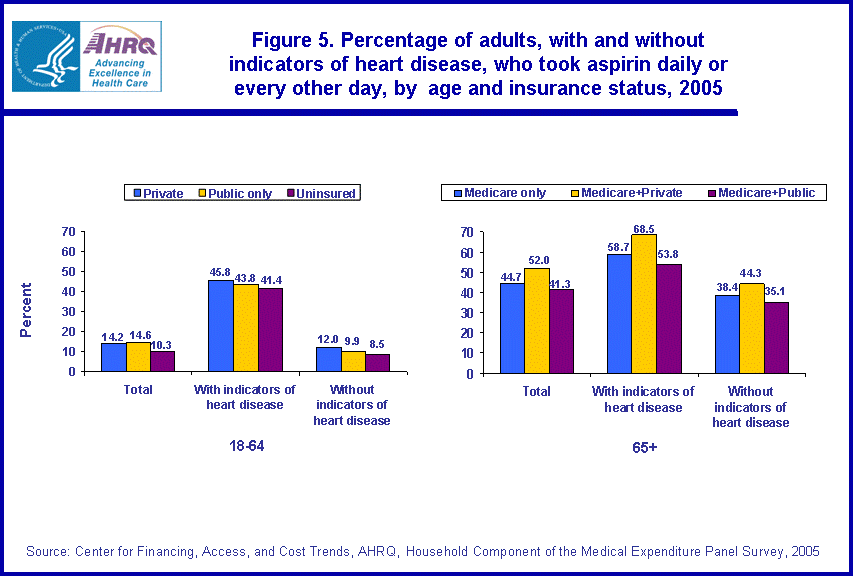 |
||||||||||||||||||||||||||||||||||||||||||||||||
|
||||||||||||||||||||||||||||||||||||||||||||||||
|
|
||||||||||||||||||||||||||||||||||||||||||||||||


